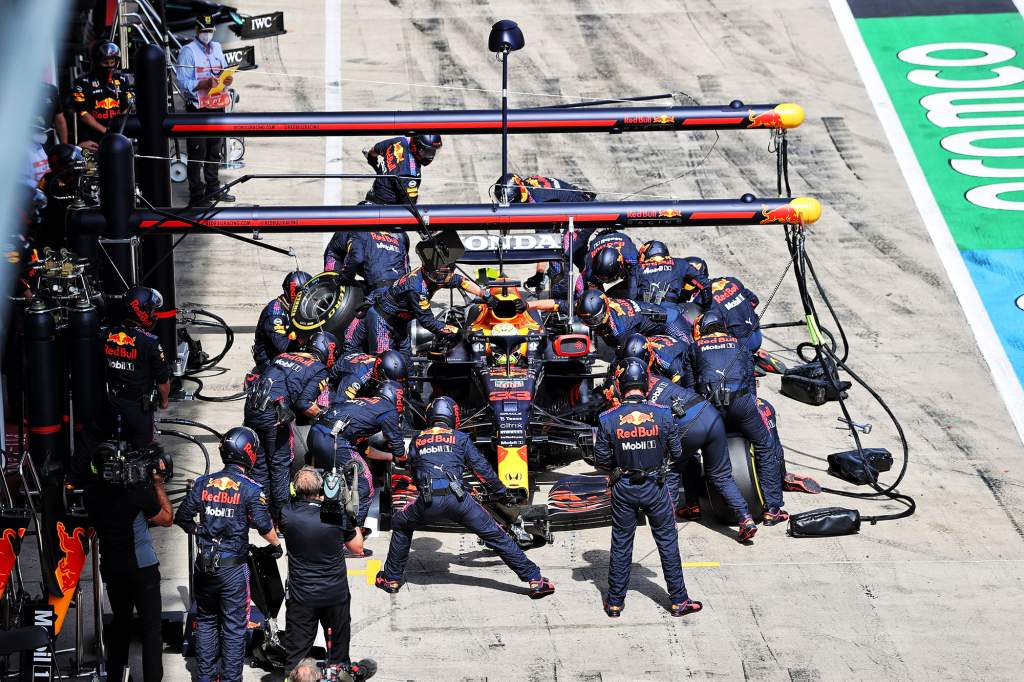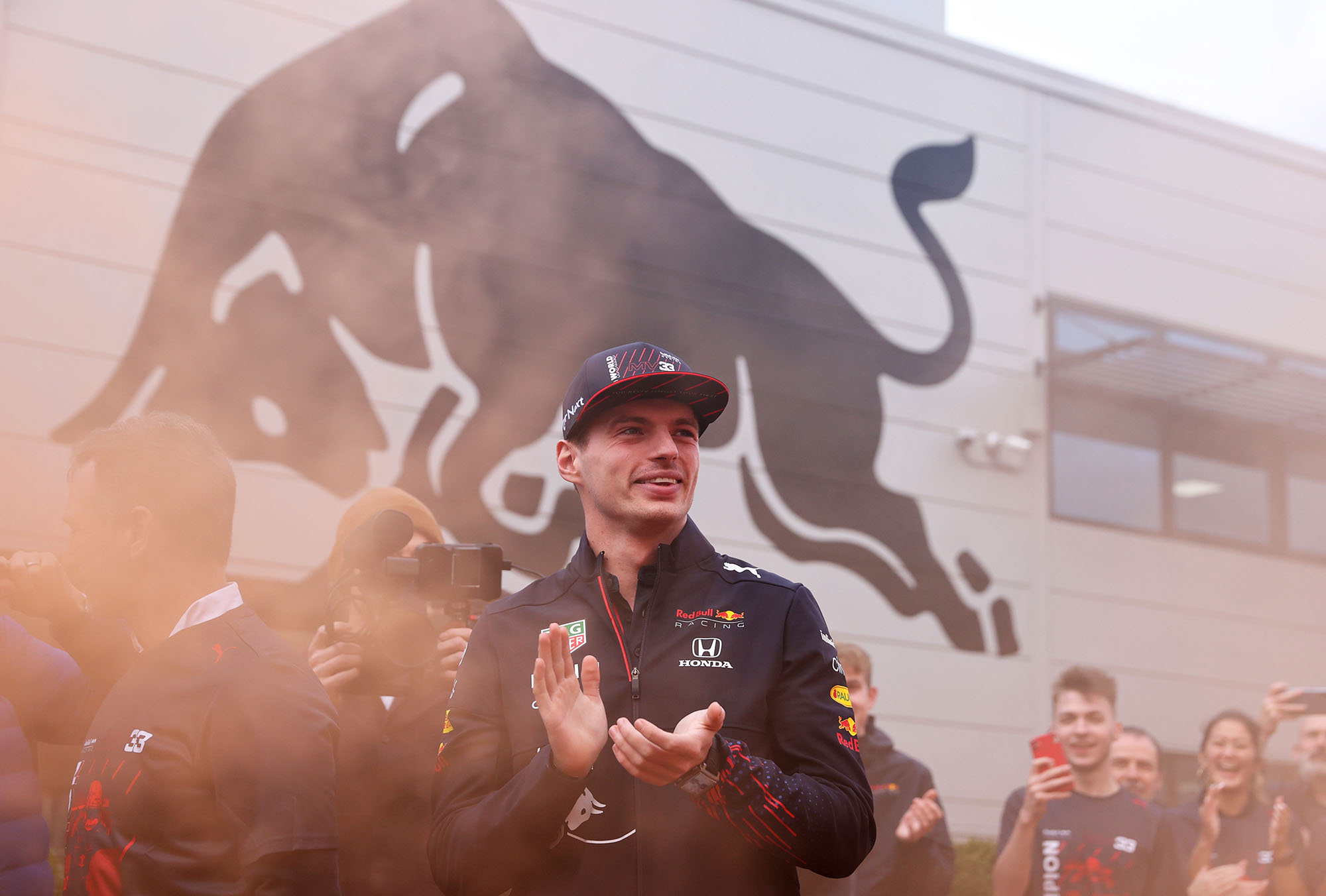The 13 ways Red Bull got its cost cap calculation wrong
The FIA’s summary of Red Bull’s Accepted Breach Agreement revealed that the Cost Cap Administration found Red Bull’s submission incorrectly calculated costs in 13 different areas. Edd Straw explains what they all are

The FIA’s summary of Red Bull’s Accepted Breach Agreement revealed that the Cost Cap Administration found Red Bull’s submission incorrectly calculated costs in 13 different areas.
The excluded costs are those that do not have to be counted towards the cost cap spending limit, a list that includes driver costs, marketing and corporate income tax among many other areas.
To summarise in the most simplified form how the cost cap spending figure is calculated, a team takes the total costs and then excludes any of the costs that they are permitted to under the cost cap.
The Cost Cap Administration concluded that, in Red Bull’s case, the excluded total was too high by £1,864,000, a figure that dropped to £432,652 “had RBR applied the correct treatment within its Full Year Reporting Documentation of RBR’s Notional Tax Credit within its 2021 submission of a value of £1,431,348”.
Here are the 13 areas where Red Bull either incorrectly excluded or incorrectly adjusted costs, along with an explanation of what the regulations state.
The ABA summary doesn’t explain explicitly how Red Bull’s accounting differed from the Cost Cap Administration’s position on how it should have been calculated, but it does at least point to the likely areas.
1. Overstated excluded costs pursuant to Article 3.1(a) of the Financial Regulations (concerning catering services)
Article 3.1 is an extensive list of exclusions from the cost cap. Article 3.1(a) states that “all costs directly attributable to marketing activities” are excluded. As the ABA summary directly references catering service, we can infer from this that catering provided to F1 personnel was incorrectly attributed to marketing.

2. Costs pursuant to Article 3.1(w) of the Financial Regulations (concerning consideration and associated employer’s social security contributions)
Article 3.1(w) excludes “all costs of consideration (together with associated employer’s social security contributions) that an F1 team demonstrates to the reasonable satisfaction of the Cost Cap Administration have been provided to an employee that has been formally placed on indefinite sick leave or disability leave and is not expected to return to work, to the extent provided during the relevant employee’s period of absence”.
The ABA summary does not explain how Red Bull breached this, but evidently the Cost Cap Administration was not satisfied that the attempt to exclude some costs in relation to sick leave qualified.
3. Costs pursuant to Article 3.1(h)(i) of the Financial Regulations (in respect of Non-F1 Activities), as those costs had already been offset within Total Costs of the Reporting Group
Article 31(h)(i) allows teams to exclude “all costs directly attributable to non-F1 activities” along with certain social security contributions for personnel “engaged in both F1 and non-F1 activities”, electricity, gas and water costs, lease and other related costs for plant equipment.
As ‘Total Costs’ are defined as the full spending for the team in the reporting period (so not the cost cap spending figure), this suggests certain excluded spending was deducted in the course of creating that figure, then offset a second time when the cost cap spending figure was calculated.

4. Costs pursuant to Article 3.1(k) of the Financial Regulations (in respect of bonus and associated employer’s social security contributions)
Employee bonuses are paid based on the achievements of the season. In Red Bull’s case, it’s known to offer generous bonus payments in the case of championship victory.
Article 3.1(k) excludes all bonus costs, but this is set at a maximum level of the lower of two figures. These are either 20% of the ‘Total Fixed Employee Renumeration”, which is defined as “the aggregate annual basic salaries and bonuses of all employees” within the F1 team (and those outside of it that are counted as such), or the bonus amount, adjusted for indexation plus “the amount of any employer’s social security contributions in respect of the amount of such employee bonus costs”.
Bonus payments can be made beyond this level, but any spending over the cutoff cease to be excluded costs. Therefore, Red Bull broke the limit and therefore used too high a figure for bonuses when calculating its cost cap spending figure.
5. Understatement of Relevant Costs in respect of a gain on disposal of fixed assets by failing to make the necessary upwards adjustment
This appears to relate to the capital expenditure aspect of the financial regulations, specifically making profit through the sale (disposal) of any fixed assets.
6. Costs pursuant to Article 3.1(q) of the Financial Regulations (concerning apprenticeship levies)
Article 3.1(q) excludes any social security contributions that the team is legally obliged to pay that exceeds 13.8% of the Total Employee Remuneration.
The ABA summary states this relates to apprenticeship levies. The apprenticeship levy is paid at a rate of 0.5% of an employer’s annual pay bill subject to certain conditions – including only employers with pay bills >£3million.
It’s impossible to know exactly how Red Bull was seen to have miscalculated based on this, although the apprenticeship levy also offers certain allowances depending on how companies operate and what schemes they are connected to.
Either way, it appears Red Bull failed to account correctly for how its apprenticeship levy payments impacted the costs used to calculate the level at which social security contributions can be excluded.

7. Costs pursuant to Article 3.1(h)(ii)(i) of the Financial Regulations (concerning consideration and associated employer’s social security contributions)
This relates to excluding social security contributions related to any staff engaged in a mix of F1 and non-F1 activities. The latter are excluded. This suggests that Red Bull has not been able to “prove to the satisfaction of the Cost Cap Administration that an identifiable proportion” of these costs really does apply to non-F1 activities as the financial regulations demand.
8. Understatement of Relevant Costs in respect of provisions set forth by Article 4.1(a)(i) of the Financial Regulations (concerning the cost of use of Power Units)
Article 4.1 relates to the adjustment of costs when it comes to “related party transactions, exchange transactions, inter-team transactions, power unit transactions and transactions pursuant to which a customer competitor uses a transferable component or a sub-assembly of a transferrable component”.
The ABA summary states this element of the breach relates to the power units. Power unit spending is an excluded cost, but this relates to transactions between Red Bull and either Honda or its own Powertrains companies. Presumably, Red Bull felt that it had accounted for these properly but the Cost Cap Administration disagreed.
9. Costs pursuant to Article 3.1(h) (i) of the Financial Regulations (concerning consideration and associated employer’s social security contributions)
This effectively repeats the seventh item on this list, but has presumably been considered a separate instance of costs being incorrectly excluded.
10. Understatement of Relevant Costs in respect of provisions set forth by Article 4.1(f)(i)(B) of the Financial Regulations (concerning use of inventories)
This regulation states that “the cost of an item of used inventories must be recognised in full as an expense in the full year reporting period in which it was first used in respect of the F1 team’s F1 cars, provided that where such first use occurs prior to 1 January 2021, the cost of that item of used inventories must be recognised in full as an expense in the full year reporting period ending on 31 December 2021”.
This relates to parts inventories that are carried over from year to year and suggests that Red Bull understated this figure in its cost cap calculation. But this was a regulation that was modified, which means confusion could have arisen about how this figure should be accounted for.
11. Clerical error in respect of RBR’s calculation of certain costs re-charged to it by Red Bull Powertrains Limited
Red Bull Powertrains was incorporated in February 2021, so this relates to services provided by it to the team last year. Such costs must be calculated in a certain way and presumably Red Bull came up with too low a figure for such services.

12. Certain travel costs pursuant to Article 3.1(r) of the Financial Regulations
This is a straightforward regulation that excludes “all flight and hotel costs in connection with a Competition or Testing of Current Cars by Personnel”.
This effectively covers all the costs for personnel for testing and racing, suggesting that some travel expenditure related to team activities outside of testing and racing that should not have been excluded was in Red Bull’s original submission.
13. Costs of maintenance pursuant to Article 3.1(i) of the Financial Regulations
Article 3.1(i) excludes “all costs Directly Attributable to Human Resources Activities, Finance Activities or Legal Activities”
It’s not immediately obvious what costs of maintenance can be applied to these activities. Most likely, that explains why any attempt to apply them to these areas was rejected by the Cost Cap Administration.





